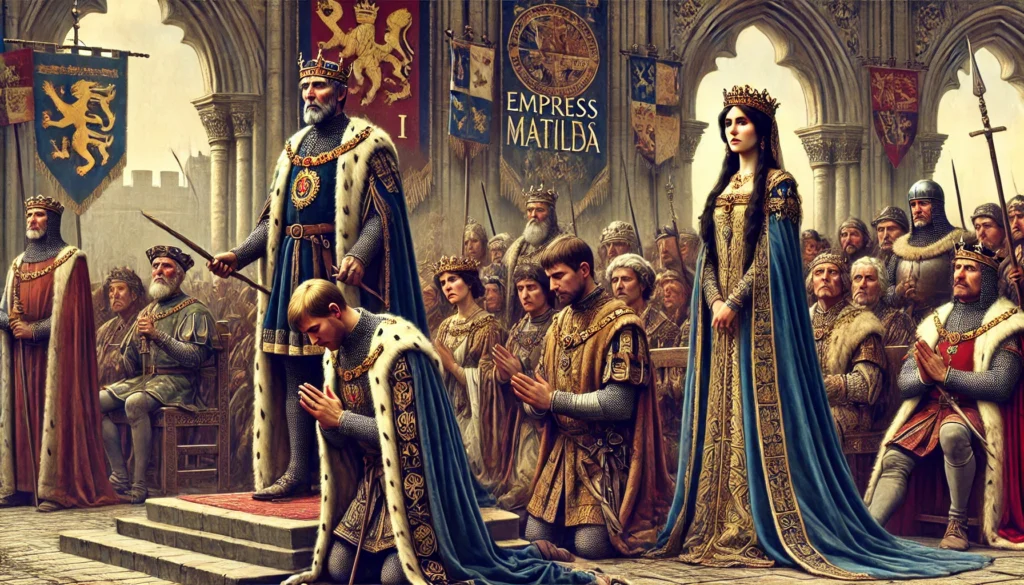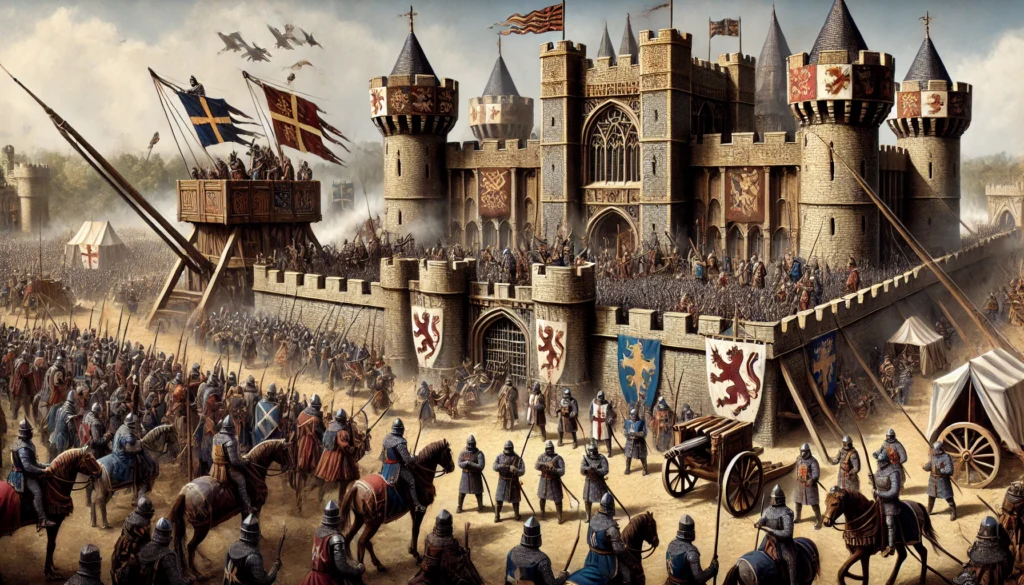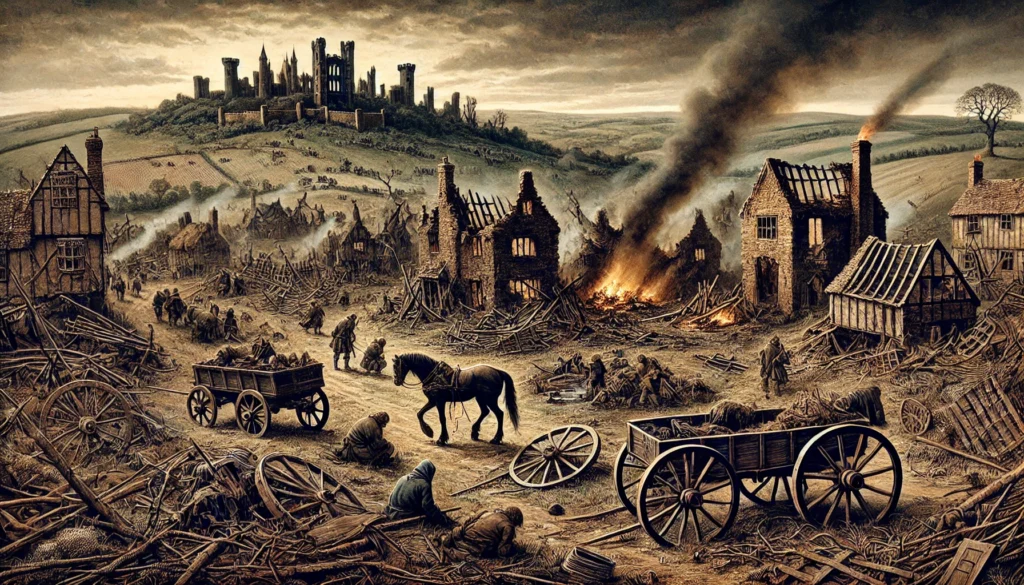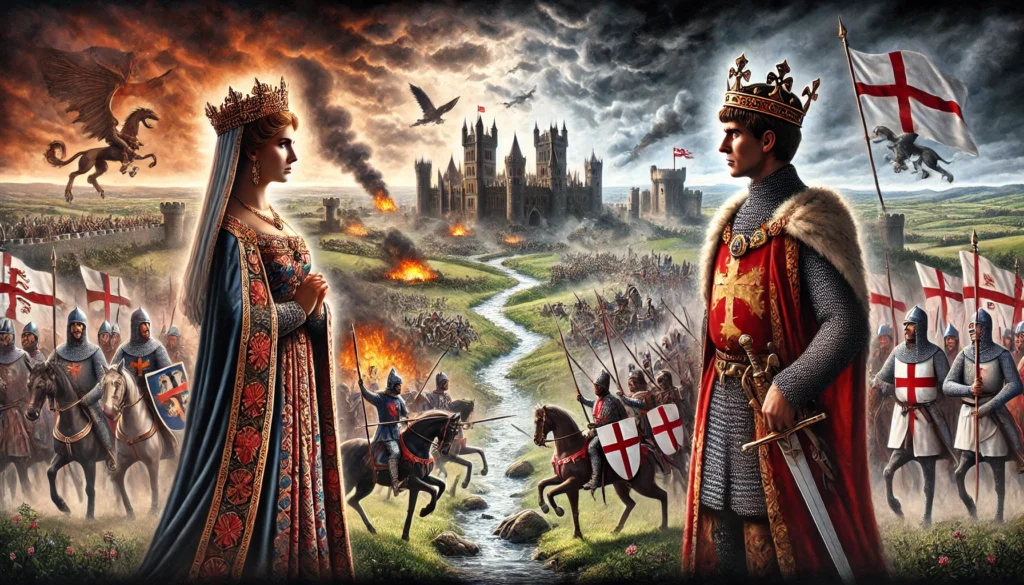In the early 12th century, England was on the brink of collapse, torn apart by a vicious civil war between two cousins. This period of turmoil, known as The Anarchy, plunged England into chaos, marking a time when “Christ and his saints slept.” It was a lawless period of feuding nobles, shifting allegiances, and suffering commoners—yet, it remains an under-explored chapter in history.
The war pitted Empress Matilda, daughter of King Henry I, against her cousin King Stephen, a man who seized the throne after Henry’s death, despite having sworn loyalty to Matilda. For 18 years, the realm was locked in bitter conflict, with power changing hands frequently and leaving devastation in its wake.
The Death of Henry I
King Henry I ruled England for 35 years, bringing stability after the tumultuous reign of his father, William the Conqueror. But Henry’s plans for a smooth succession were derailed by a single tragic event. In 1120, his only legitimate son, William Adelin, drowned in the wreck of the White Ship—a disaster that threw the royal succession into uncertainty.
Without a male heir, Henry forced the English nobility to swear an oath of allegiance to his daughter, Matilda, as his successor. However, in the male-dominated world of medieval Europe, the idea of a woman ruling was not widely accepted. After Henry’s death in 1135, England faced an unexpected twist in the succession drama.

Enter King Stephen: A Usurper on the Throne
Despite the oath, Matilda’s cousin, Stephen of Blois, seized the throne with the backing of several powerful barons. Stephen, charming and well-liked, was crowned King of England, but his claim was tenuous at best. His decision to take the crown enraged Matilda, who saw herself as the rightful queen.
For the next 18 years, England descended into a brutal civil war. Known as “The Anarchy,” this period was marked by shifting allegiances, constant sieges, and widespread suffering for the people.
The Battle for Power: Matilda vs. Stephen
Matilda’s Invasion and the Siege of Arundel
In 1139, Matilda launched her campaign to reclaim the throne, landing in England with her half-brother, Robert of Gloucester, at her side. Her arrival sparked a series of battles, with the most notable early clash occurring at Arundel Castle, where Matilda was besieged by Stephen’s forces.
Though initially outmaneuvered, Matilda escaped, and the war escalated. This war was unlike any England had seen before. Both sides fortified their positions in castles across the land, with nobles frequently switching allegiances depending on who held the upper hand at any given time.

The Capture of Stephen: A Queen Almost Crowned
In 1141, Matilda’s forces gained a major victory when they captured Stephen at the Battle of Lincoln. With Stephen in chains, Matilda entered London and prepared for her coronation. Victory seemed close at hand, but Matilda’s triumph was short-lived. Her haughty demeanor alienated the city’s citizens and nobility. As a result, the people of London revolted, forcing Matilda to flee before she could be crowned.
Stephen’s Comeback: The War Drags On
Stephen’s wife, Queen Matilda of Boulogne, rallied support and continued to fight in her husband’s name. Eventually, Stephen was freed in a prisoner exchange for Robert of Gloucester, and the civil war continued with no end in sight.
For the next several years, neither side could gain a decisive advantage. The English countryside was ravaged by lawless mercenaries and bandits, and castles became centers of resistance or rebellion, depending on which faction controlled them. The common people suffered terribly during this period, with crops destroyed and towns looted. Chroniclers referred to this time as one in which “God and his saints slept,” reflecting the lawlessness and suffering that had gripped the land.

The Turning Point: The Treaty of Winchester
By the early 1150s, both sides were exhausted from years of war. Matilda’s cause had faltered, but her son, Henry of Anjou, was now old enough to take up the mantle of leadership. In 1153, the decisive moment came. King Stephen’s own son, Eustace, died unexpectedly, and Stephen, weary from years of conflict, sought a peaceful end.
The Treaty of Winchester was signed in 1153. It allowed Stephen to remain king for the remainder of his life, but upon his death, the crown would pass to Matilda’s son, Henry. This agreement brought an end to the civil war, and Stephen died the following year in 1154, leaving Henry II as the undisputed King of England.
The Legacy of The Anarchy
The Anarchy left a profound mark on England. The civil war had devastated the kingdom, but it also set the stage for the eventual rise of the Plantagenet dynasty under Henry II, one of the most powerful and influential kings in English history. Henry would go on to reform the legal system, expand the Angevin Empire, and bring stability back to England.
However, the scars of The Anarchy lingered. The frequent changes in power and the autonomy granted to local lords during the civil war weakened the crown’s control over the nobility. This set a precedent for future conflicts between the monarchy and the barons, culminating in the signing of the Magna Carta in 1215.

Conclusion: A War of Thrones and Ambition
The Anarchy is a reminder of how fragile even the most powerful kingdoms can be when ambition, personal grudges, and broken promises collide. It may be a forgotten chapter in history, but its impact on England was immense, shaping the country’s future in ways that are still felt today.
As we reflect on The Anarchy, we see the timeless nature of power struggles—where loyalty, legacy, and leadership can determine the course of nations. It’s a story of missed opportunities, relentless ambition, and the high cost of civil war.


